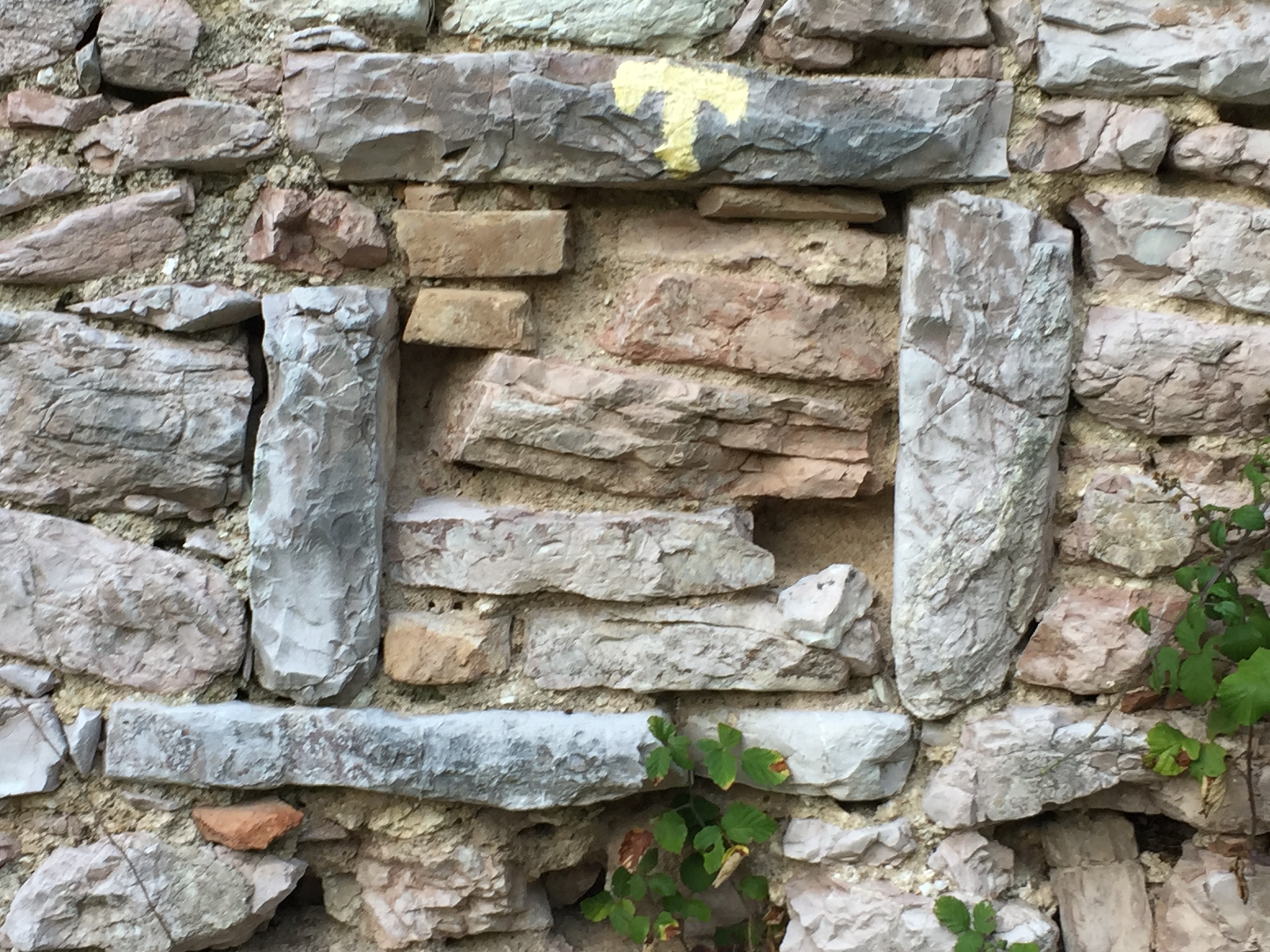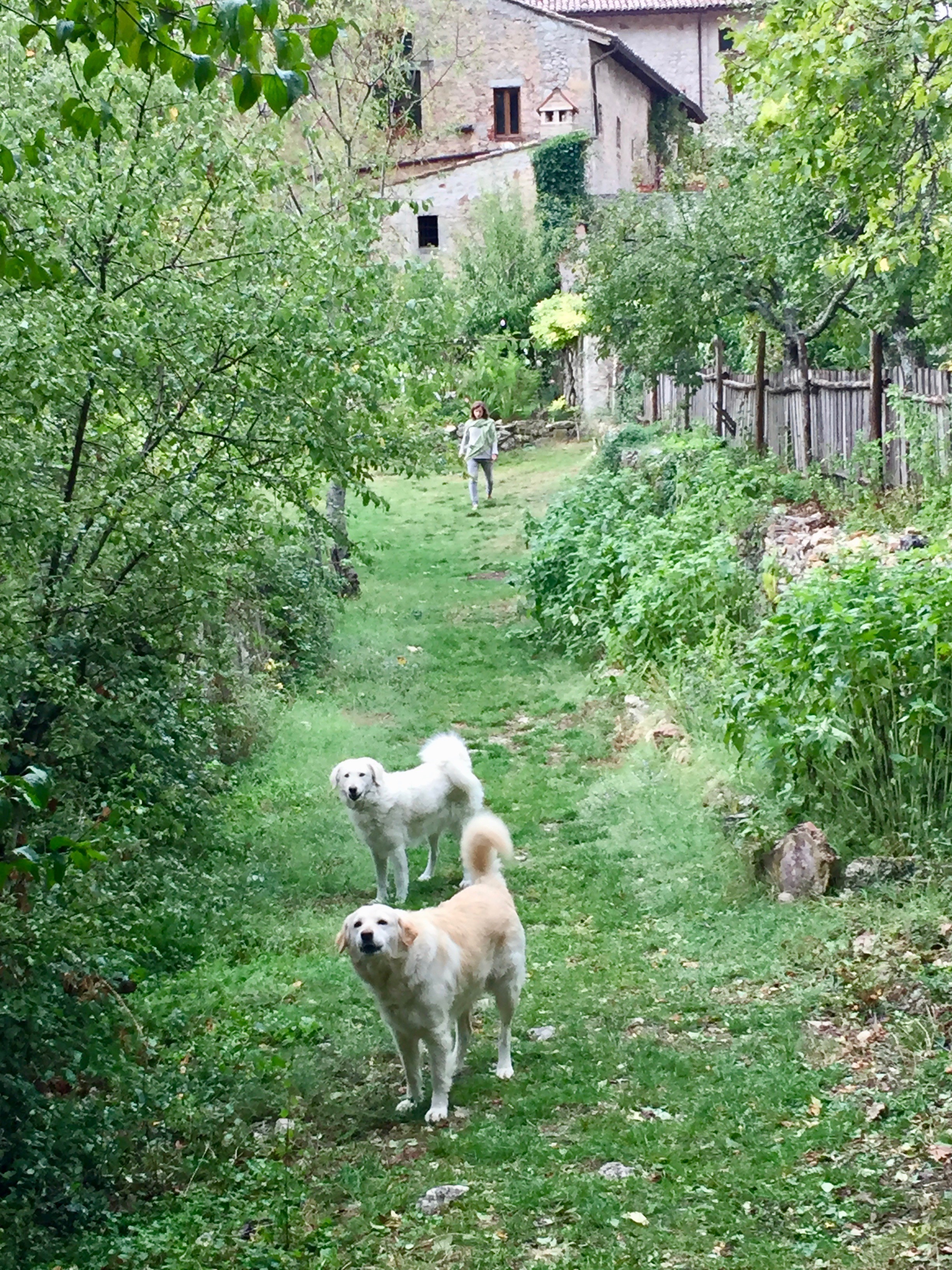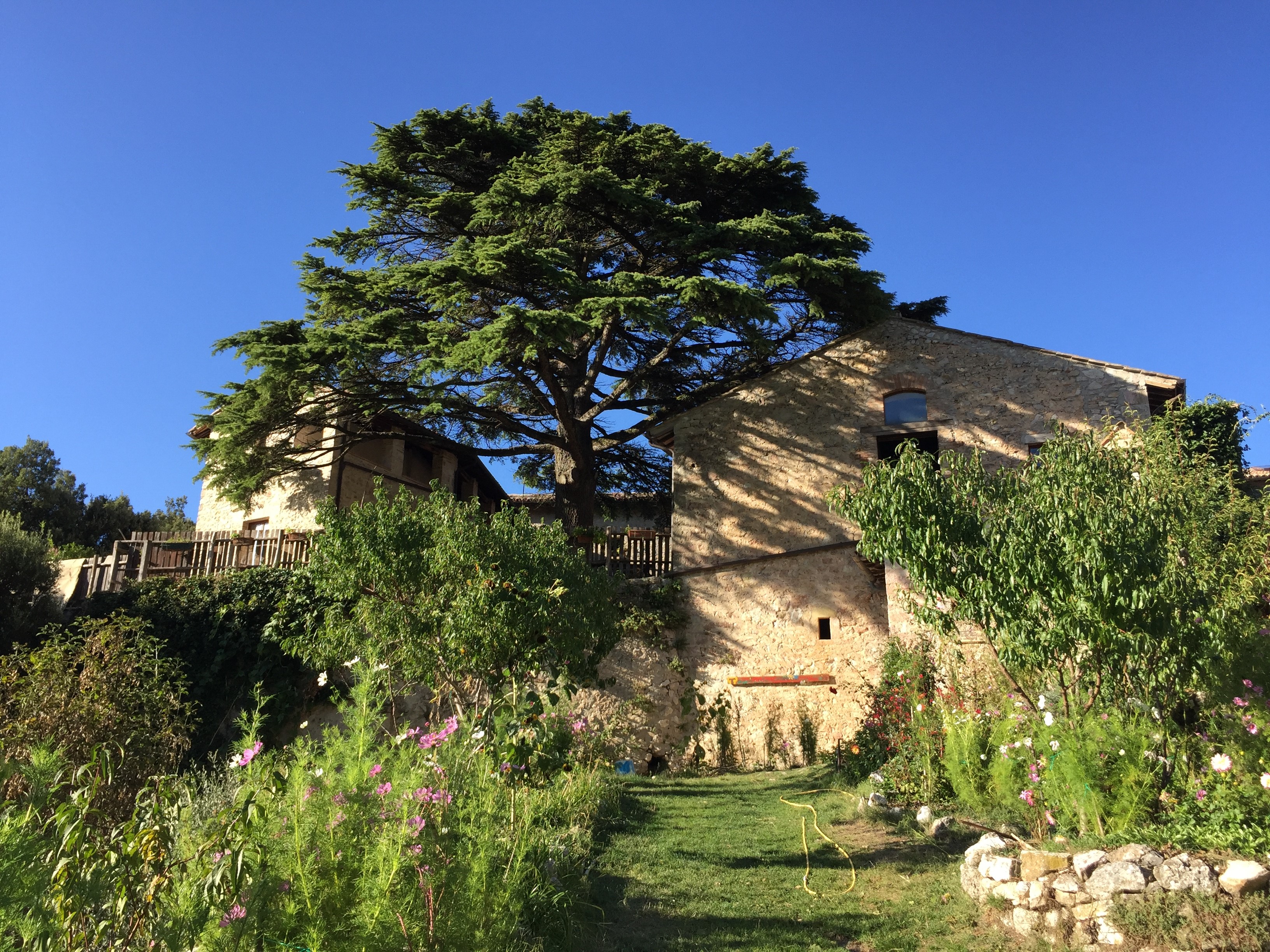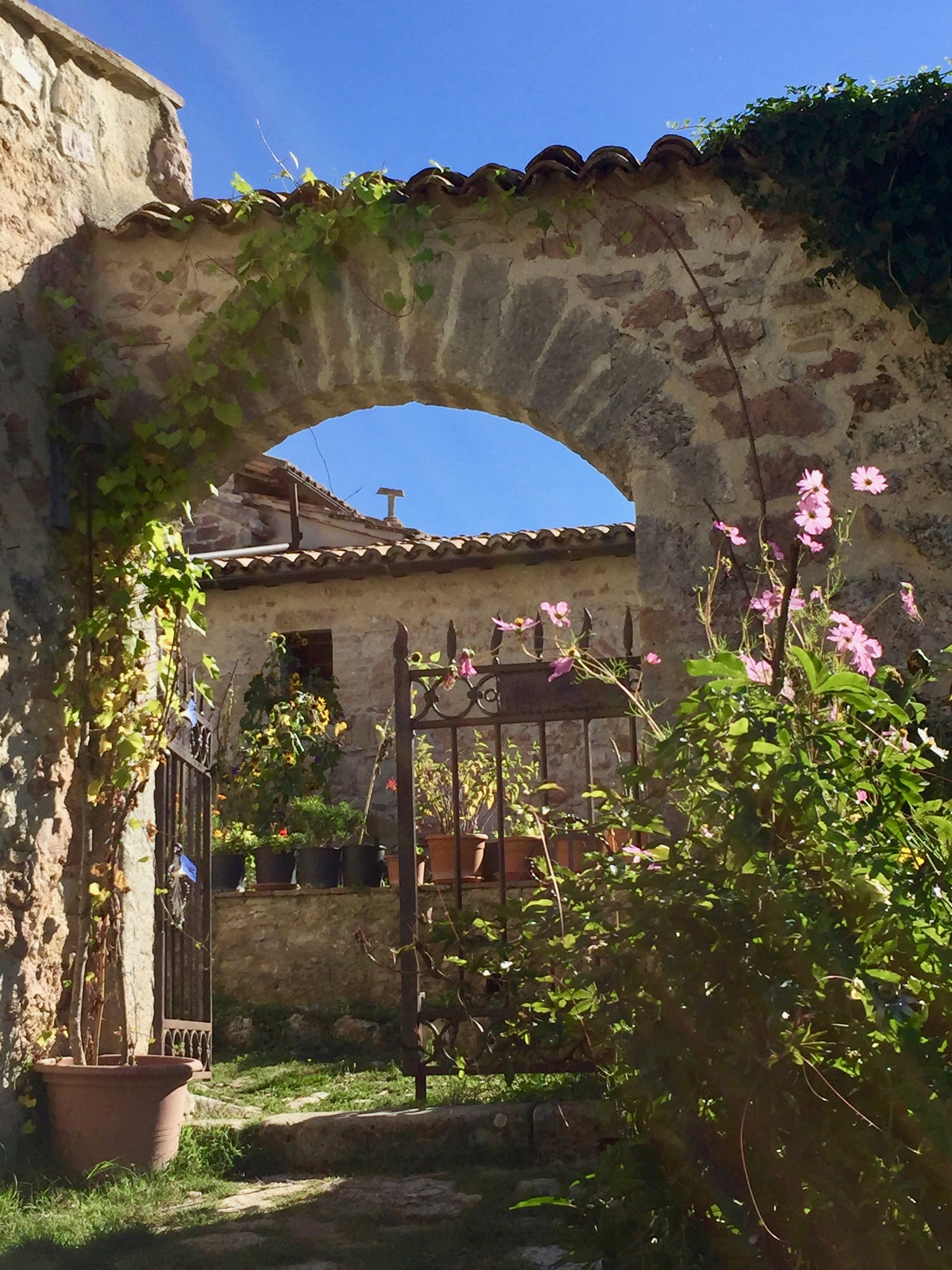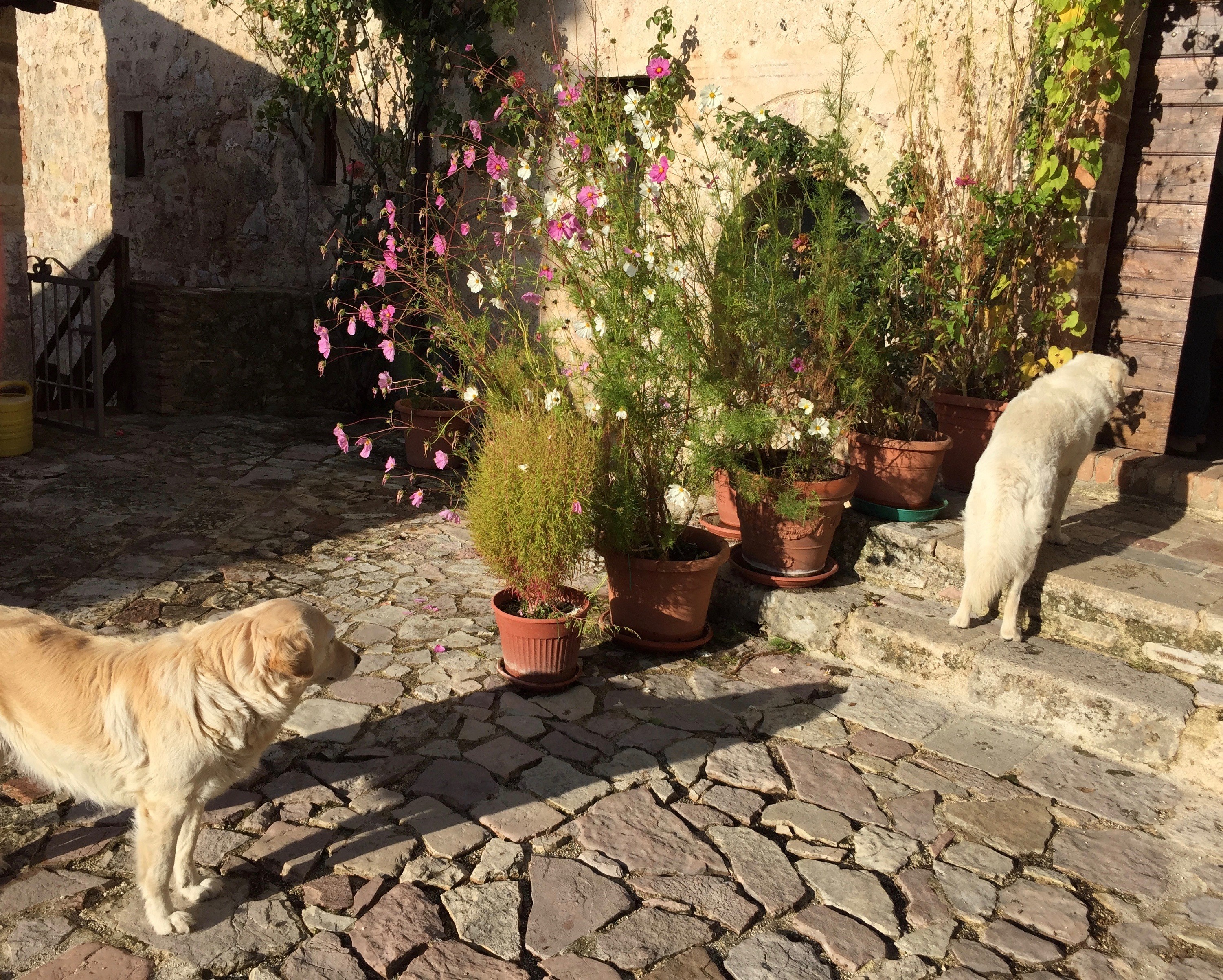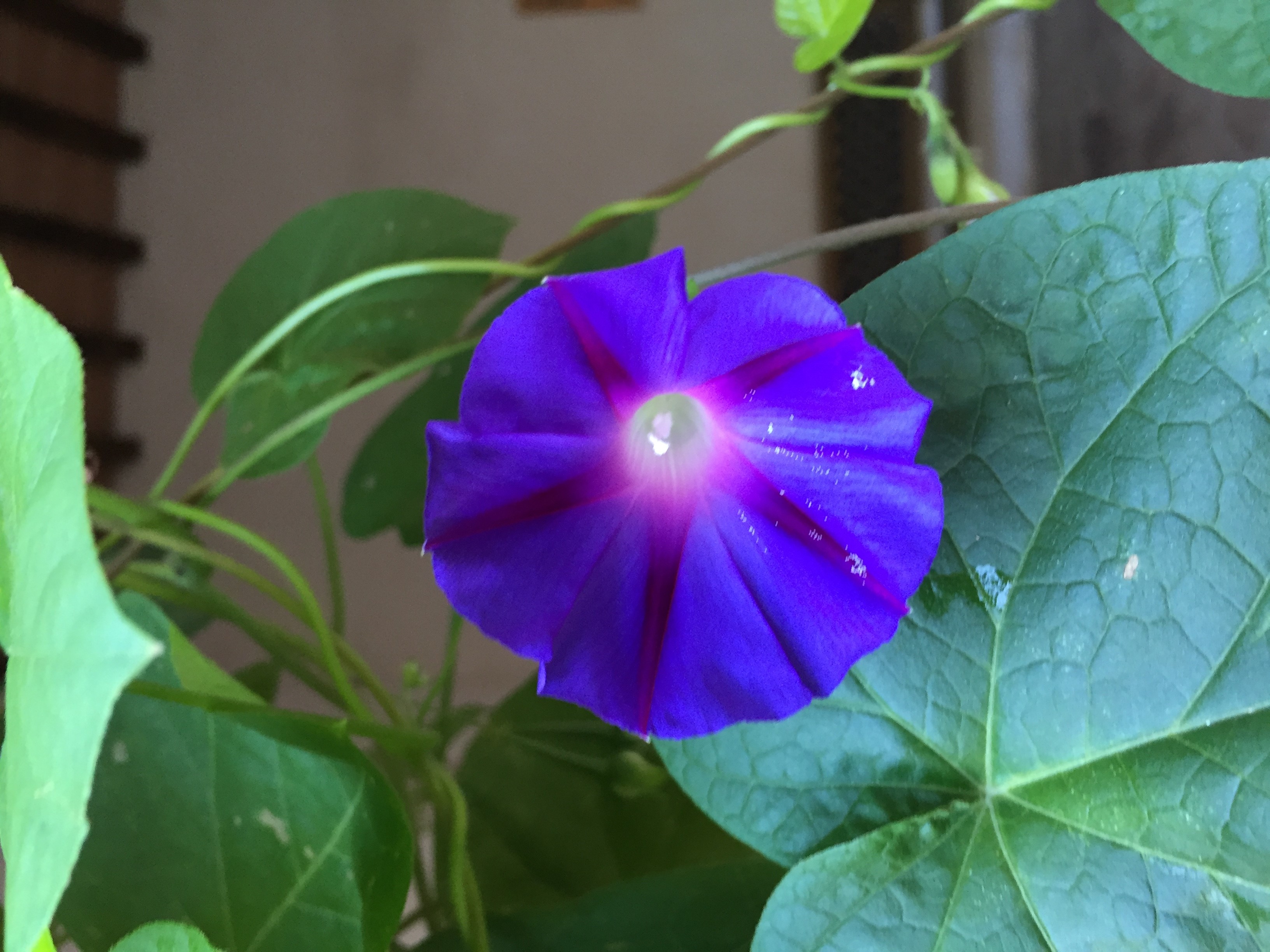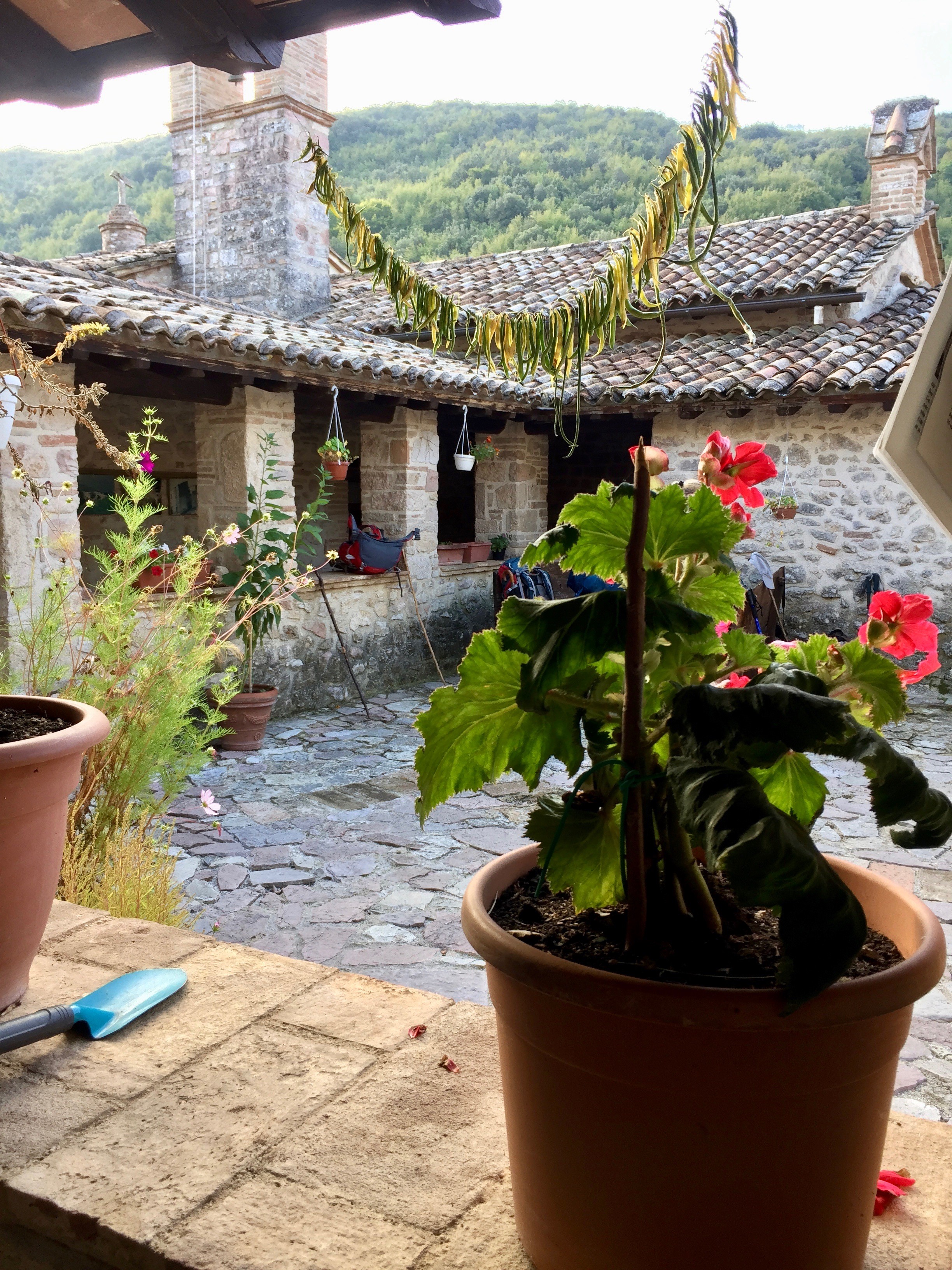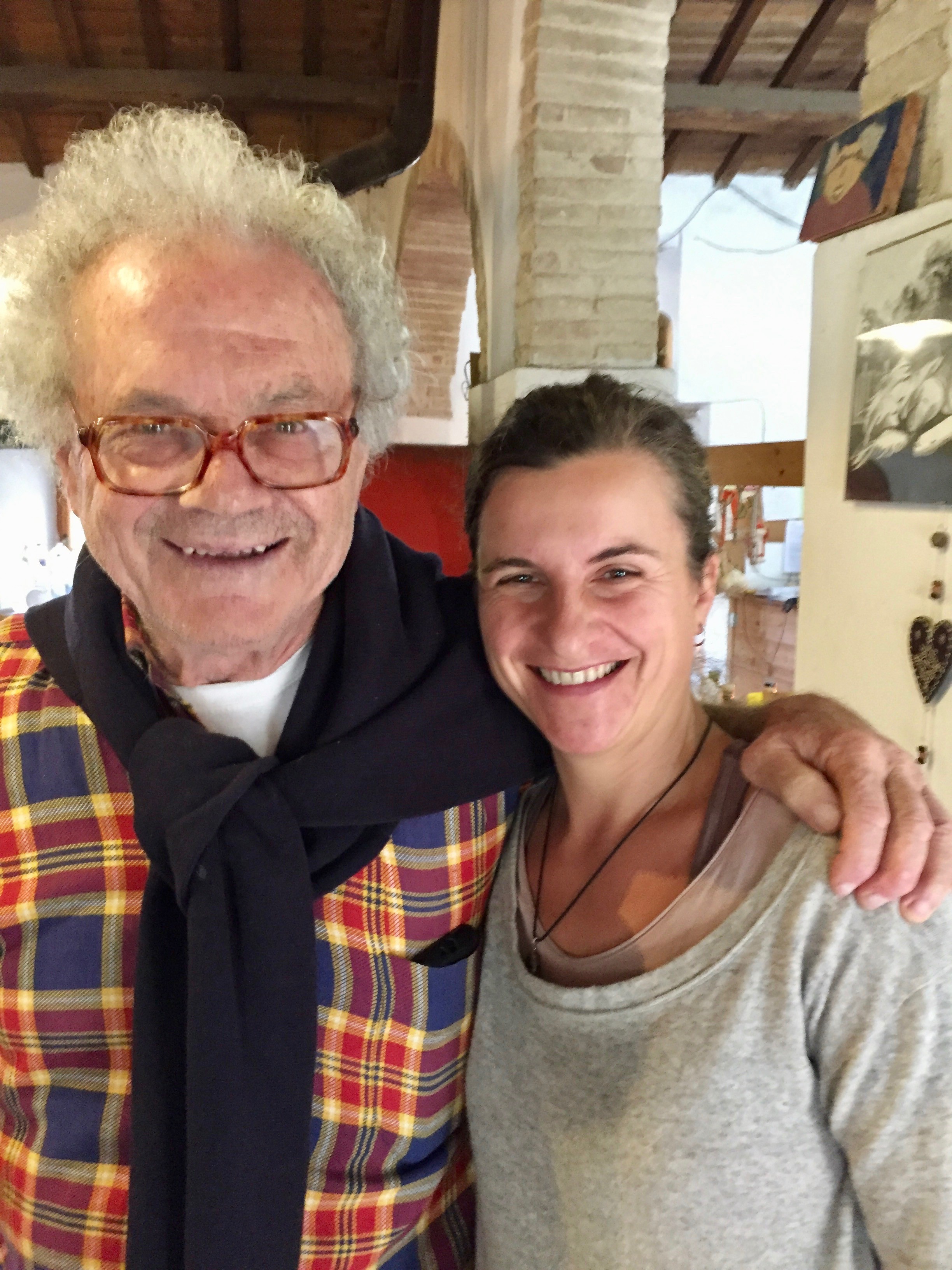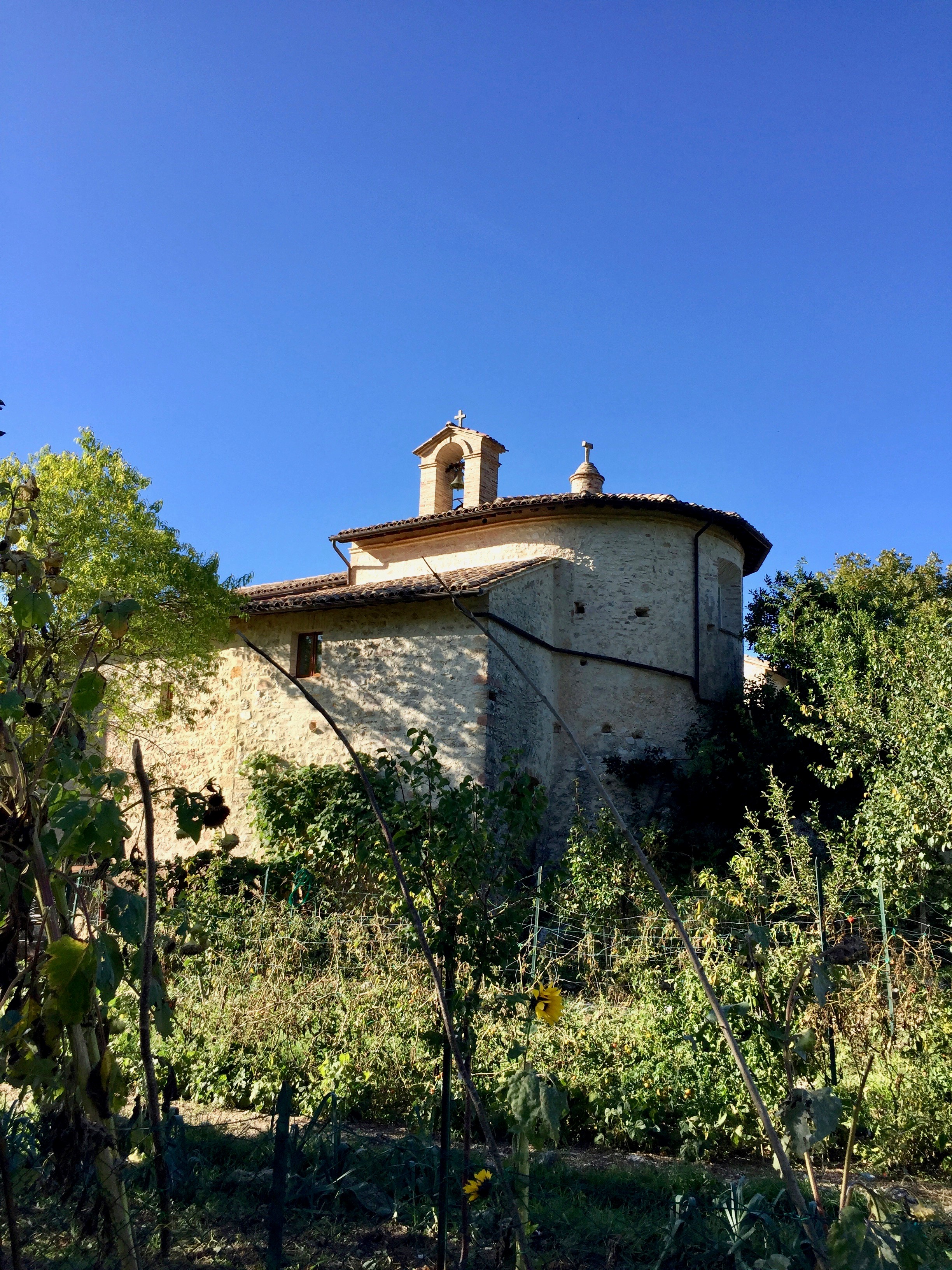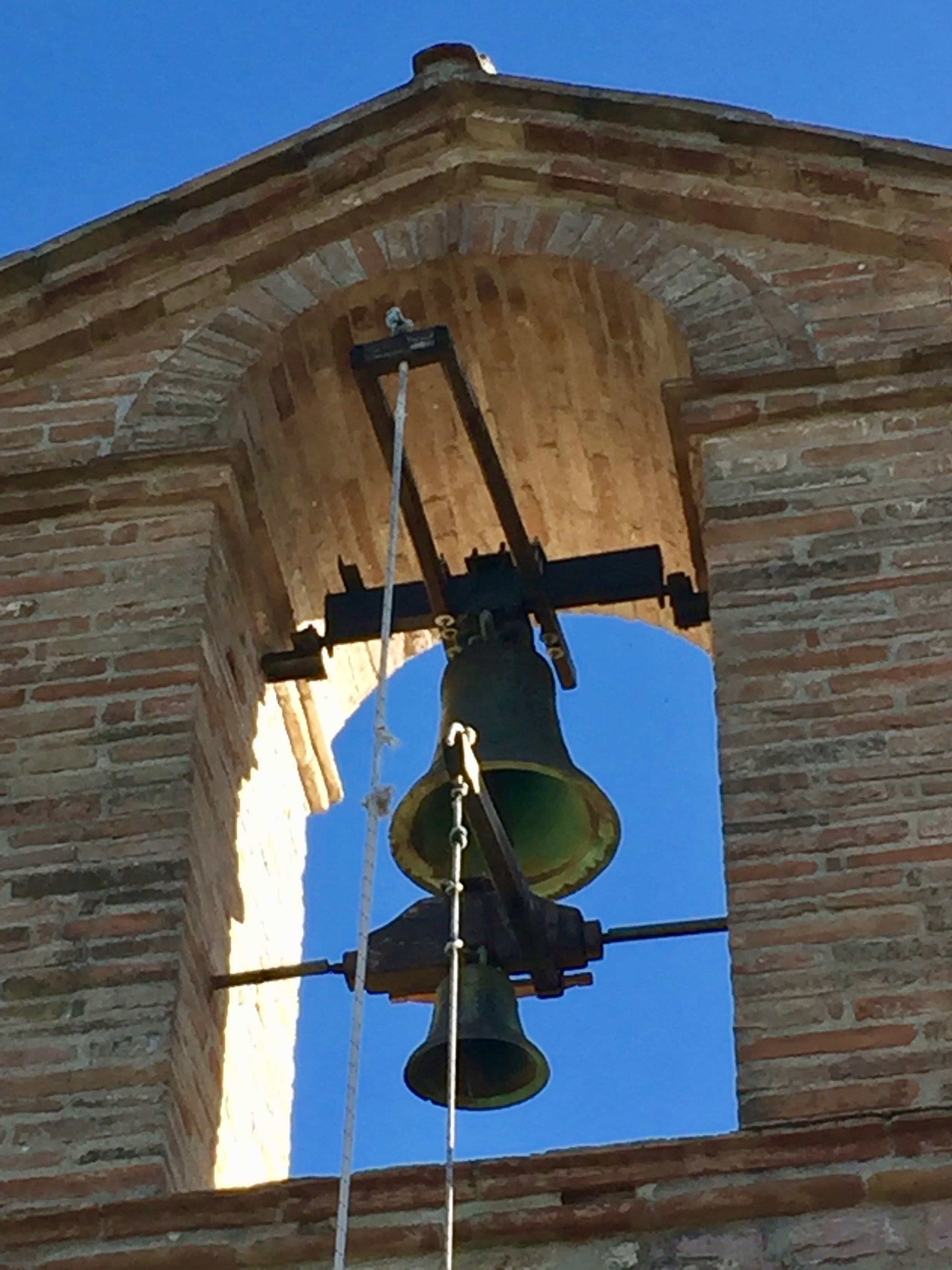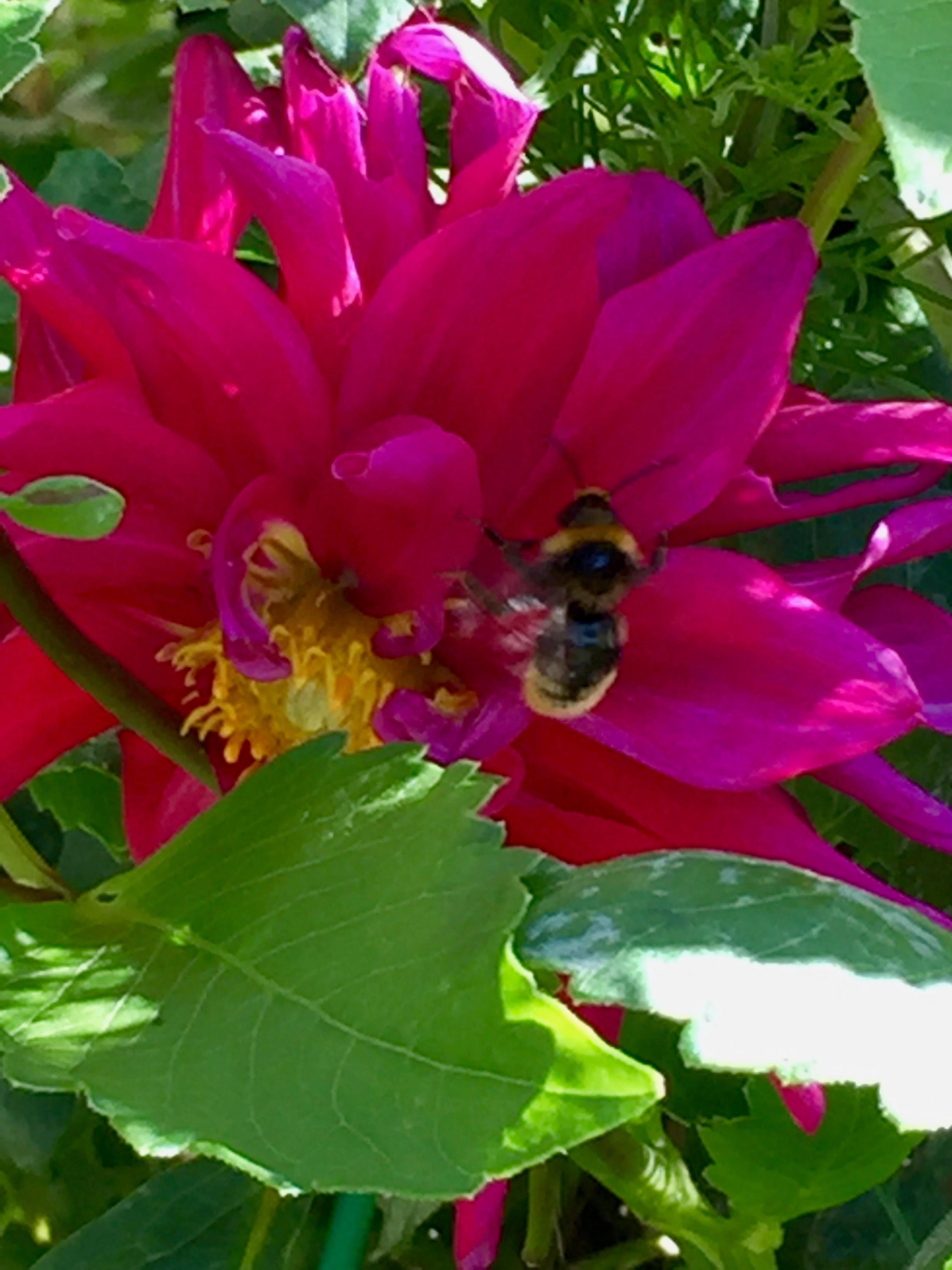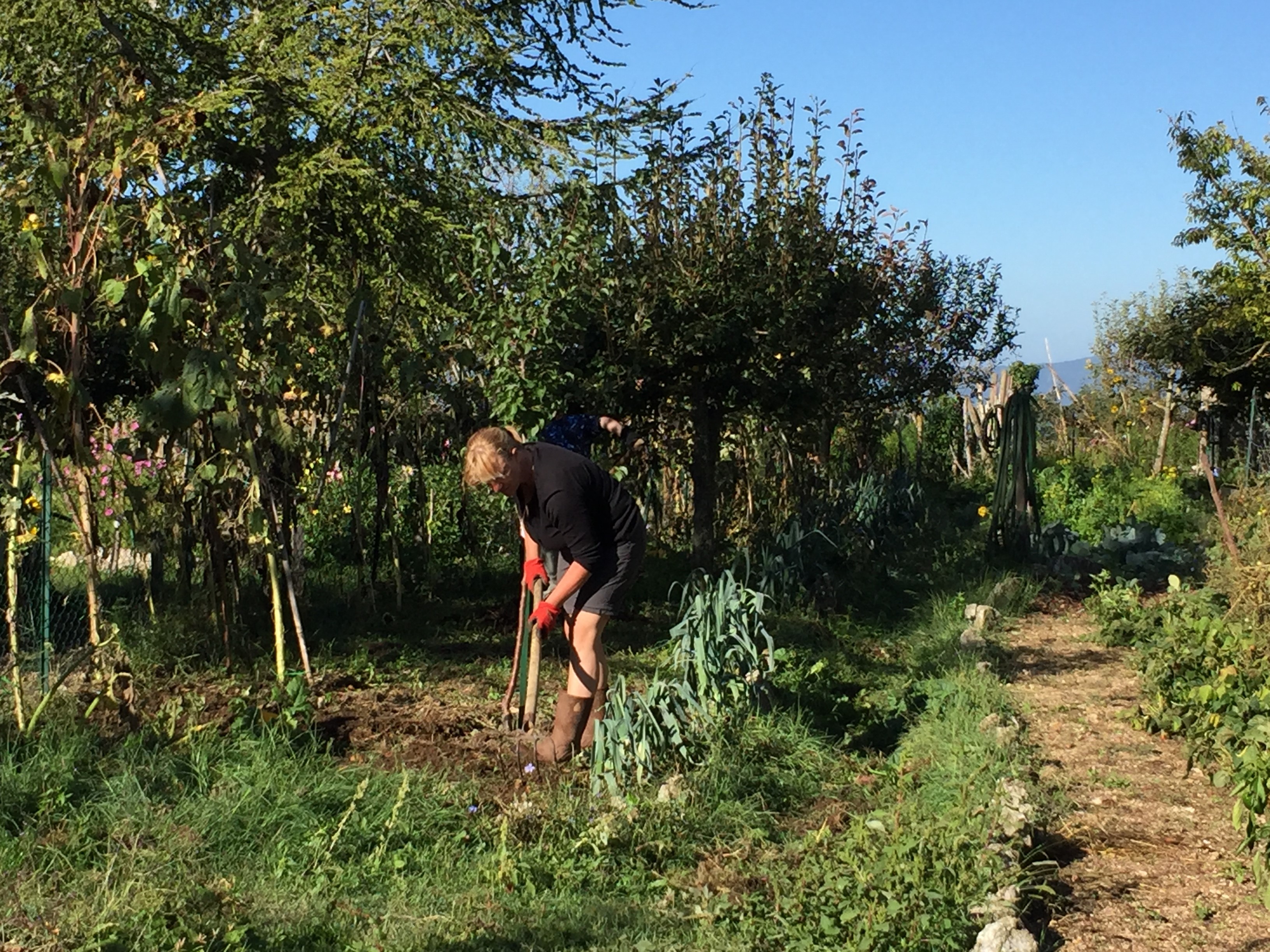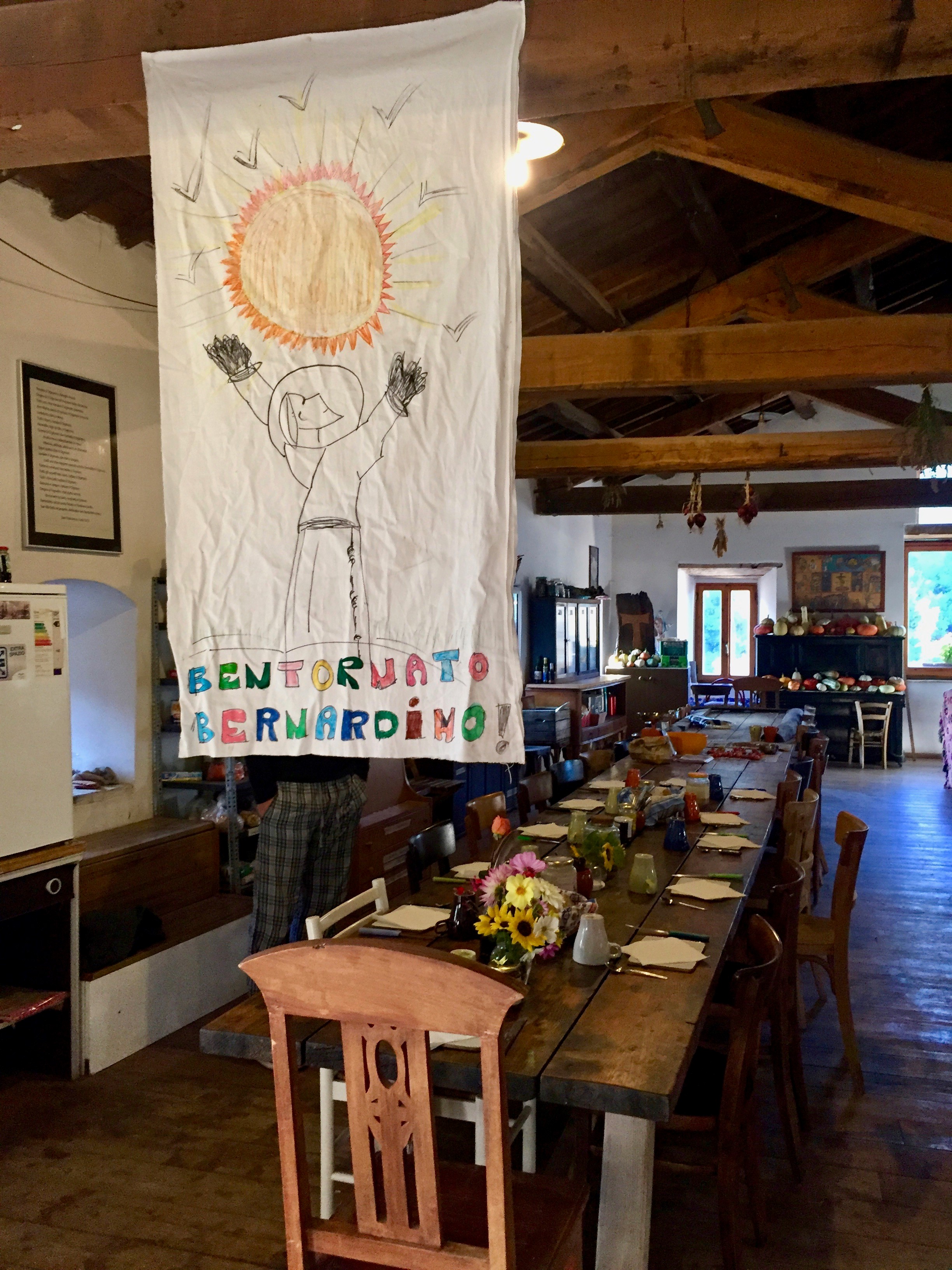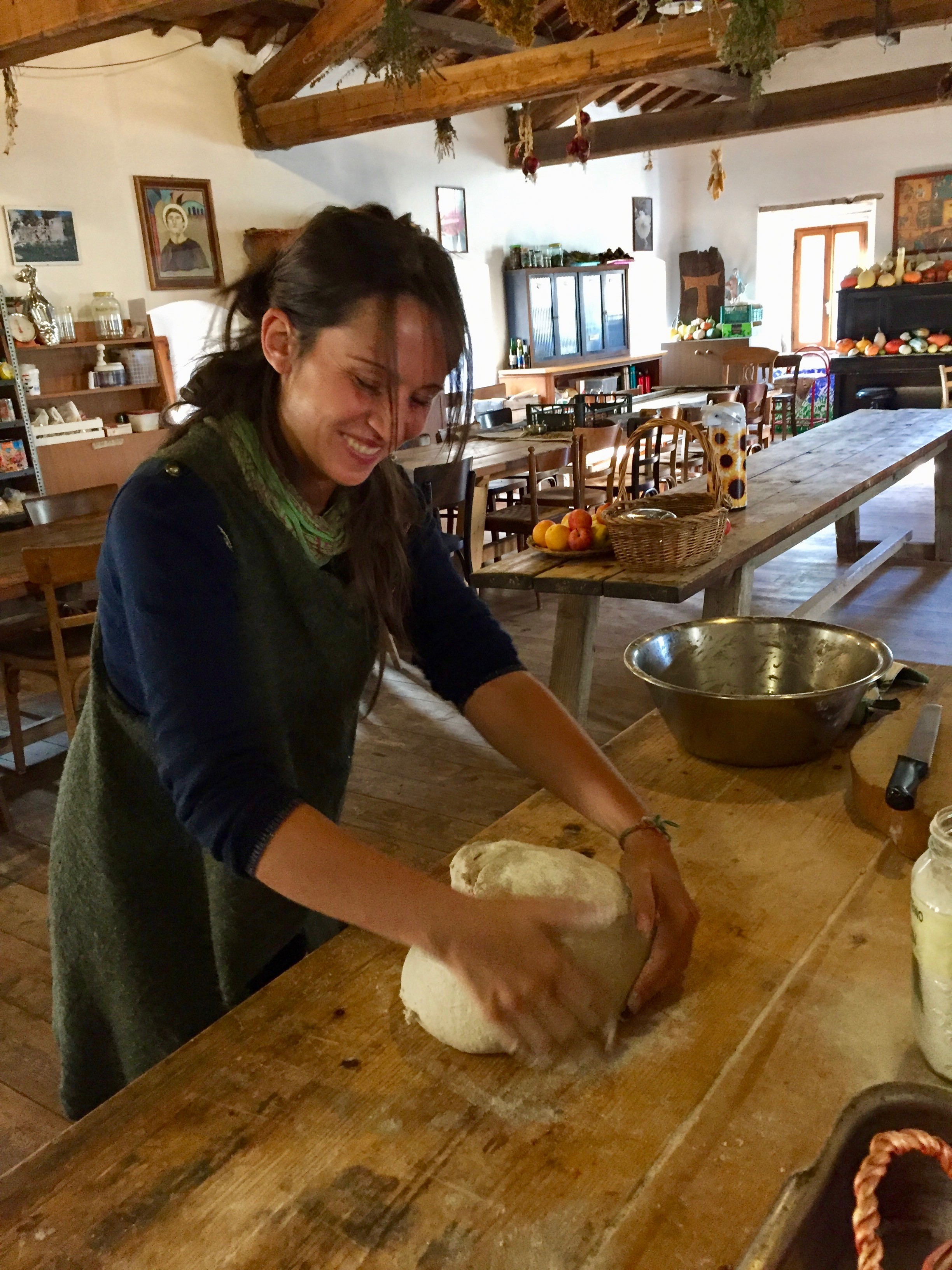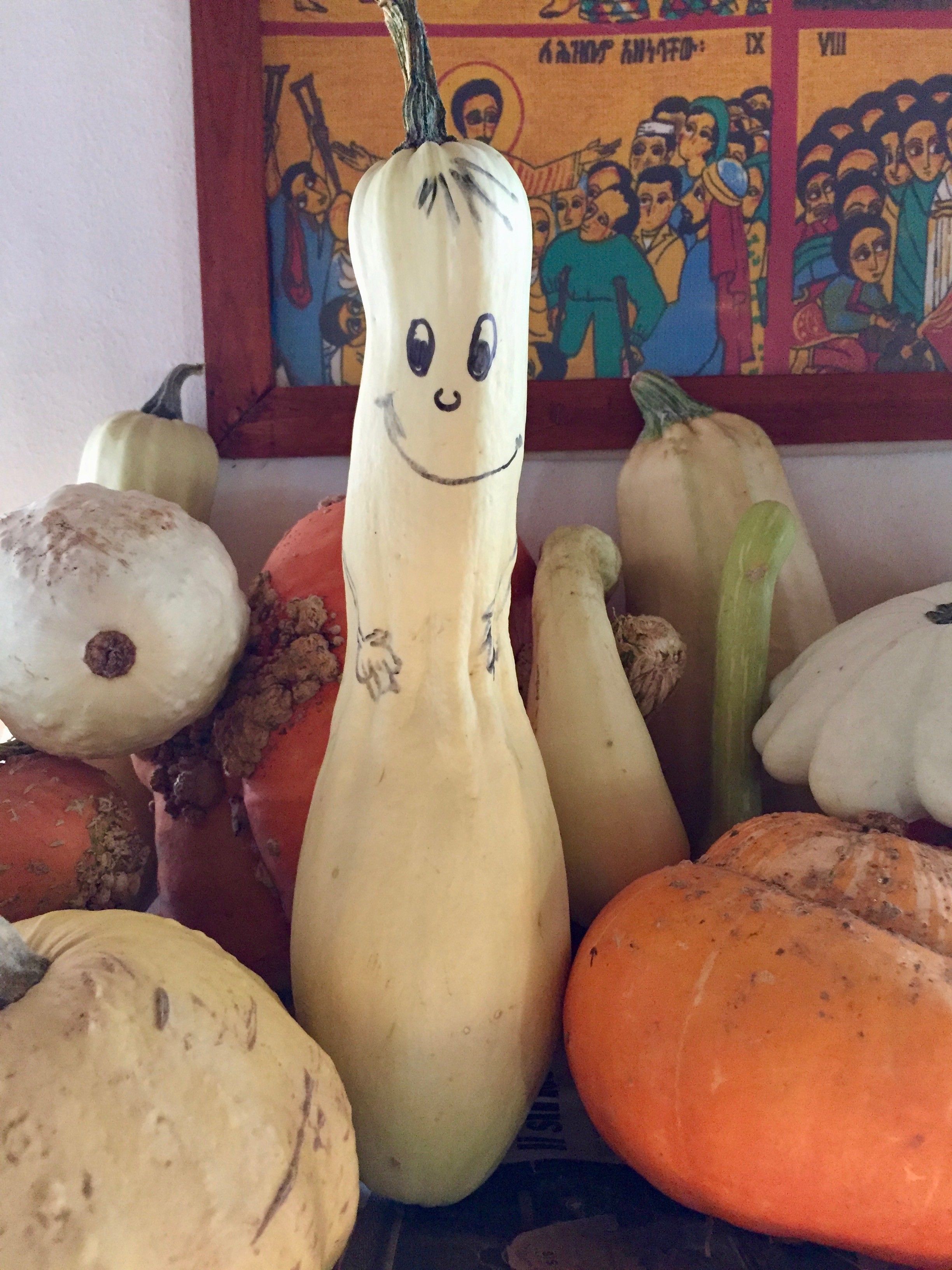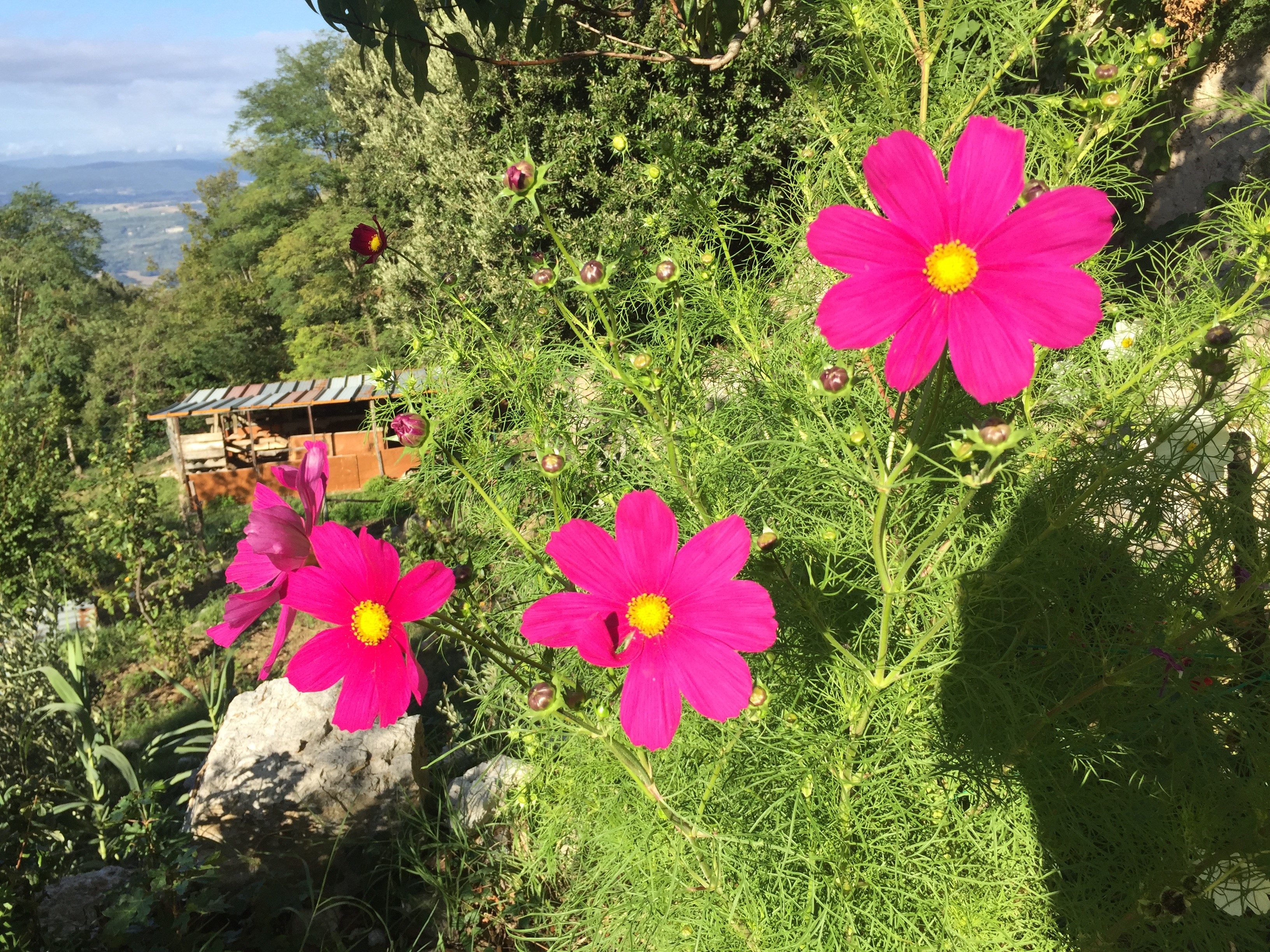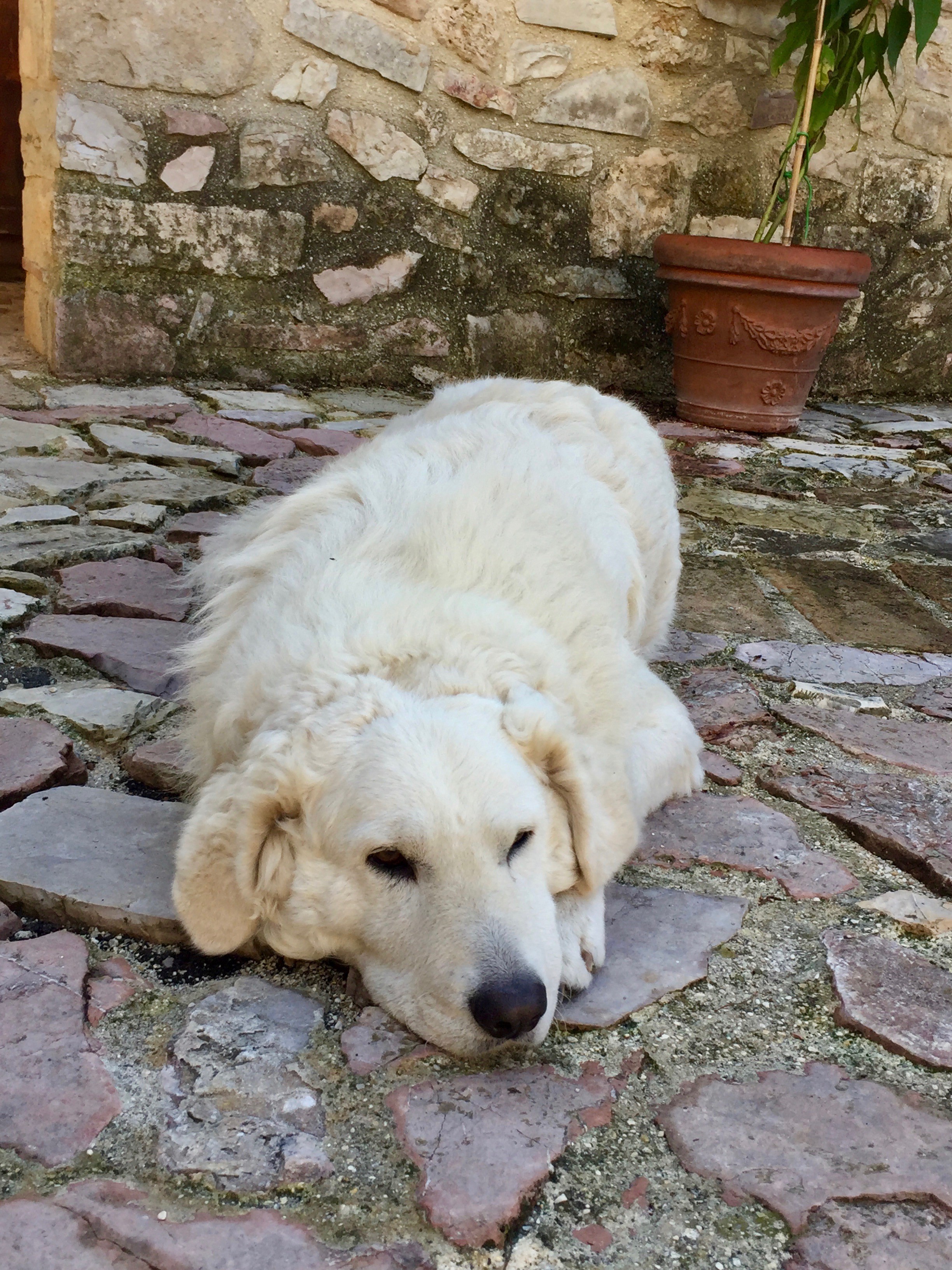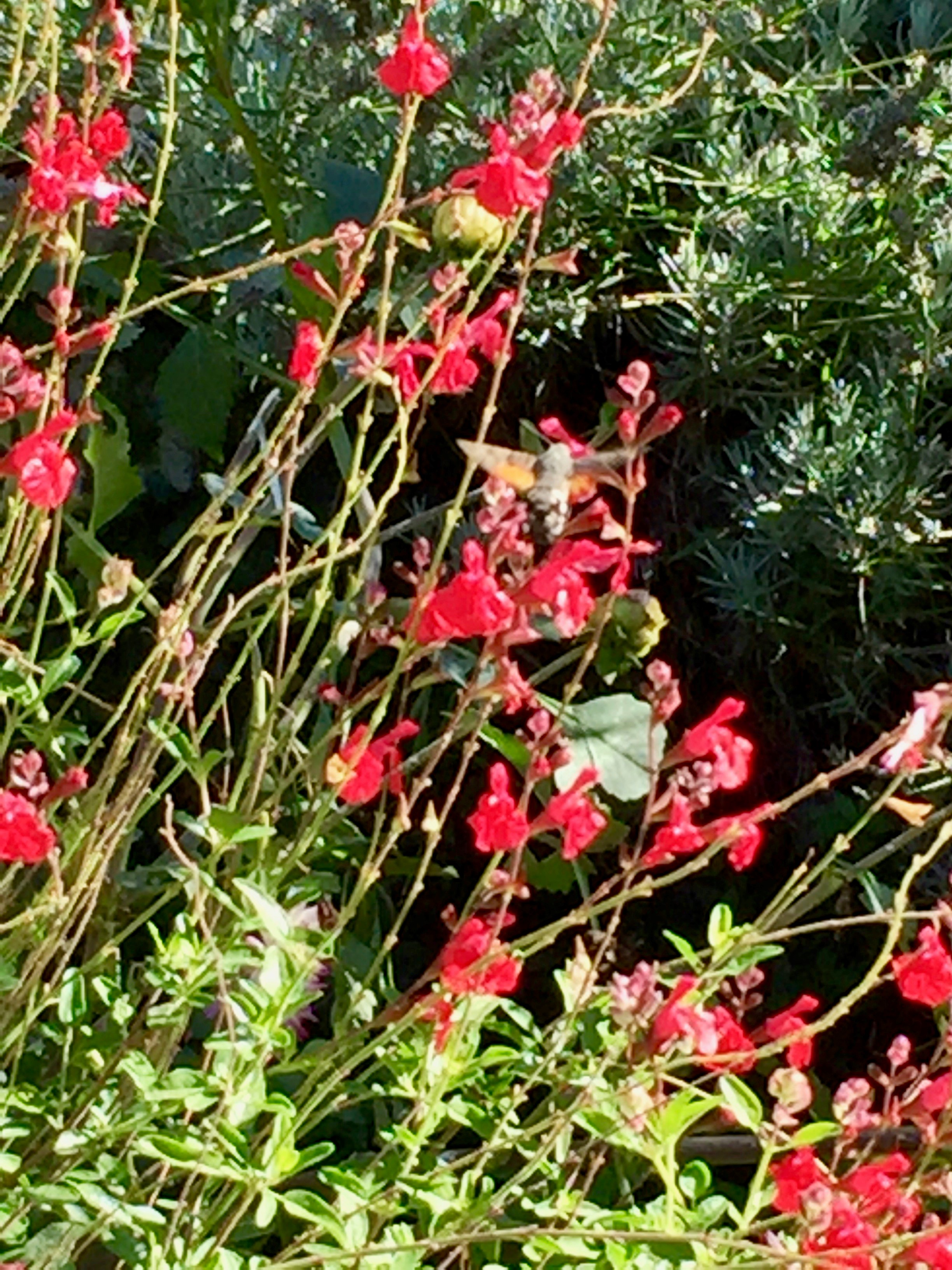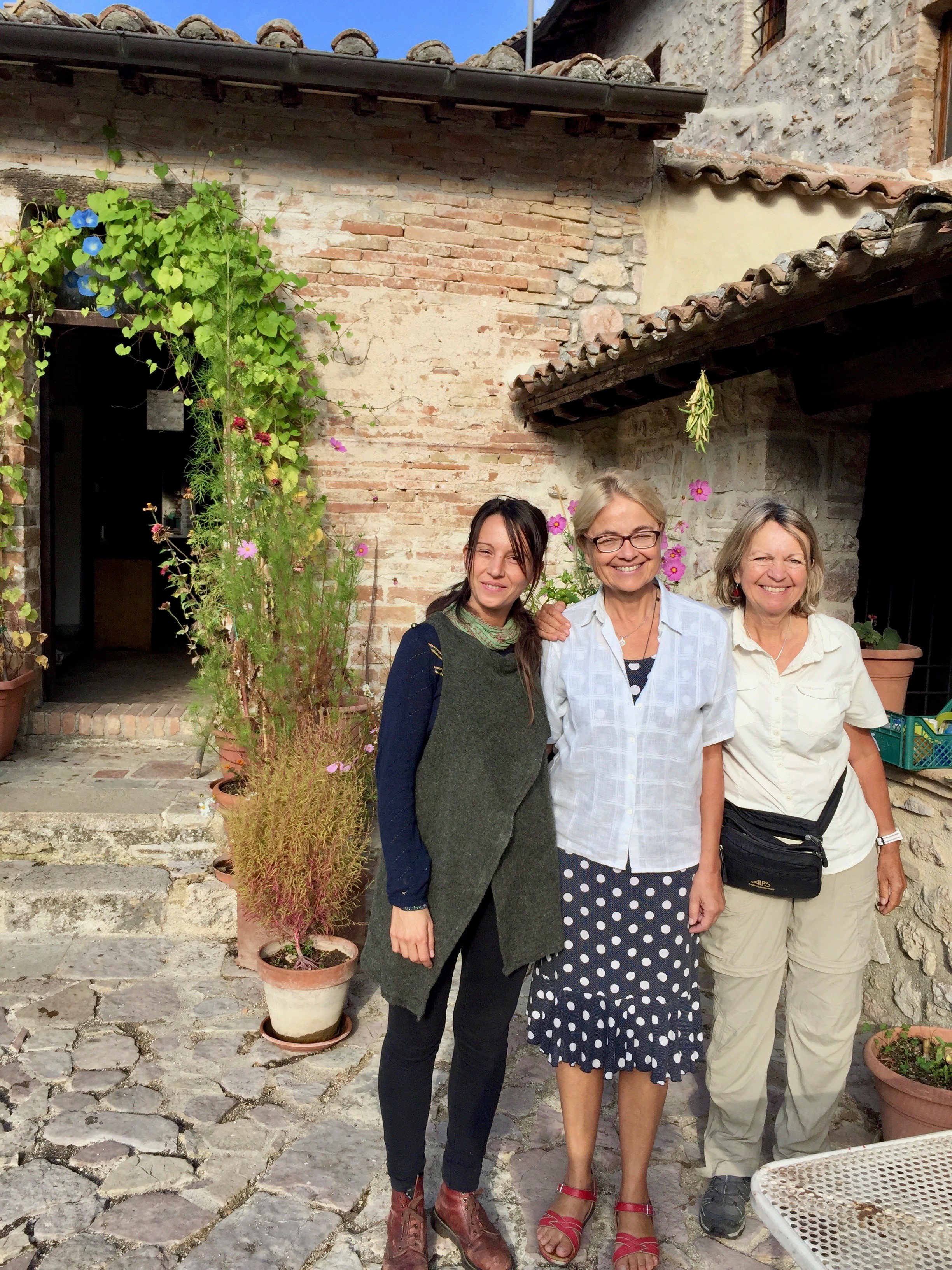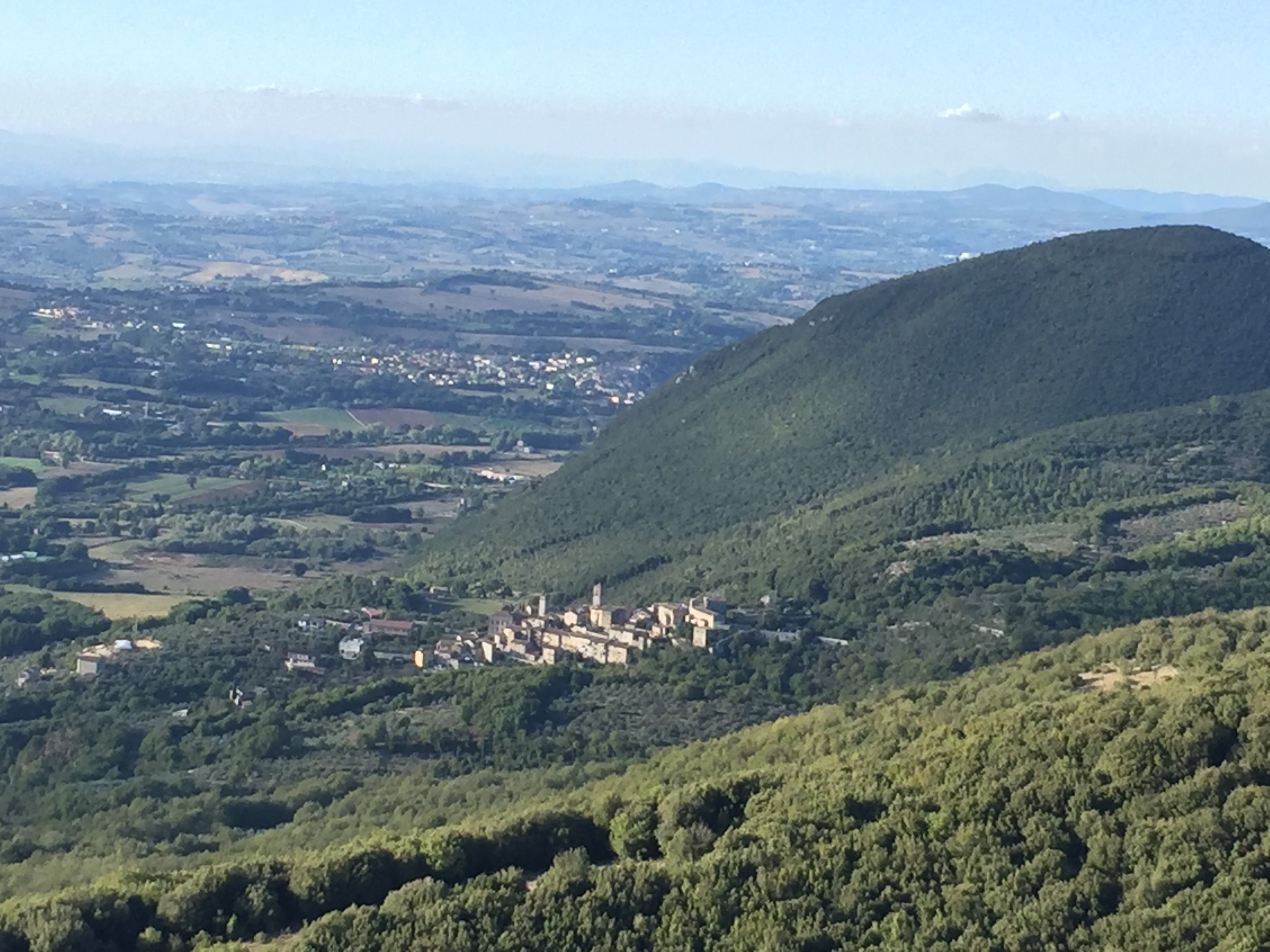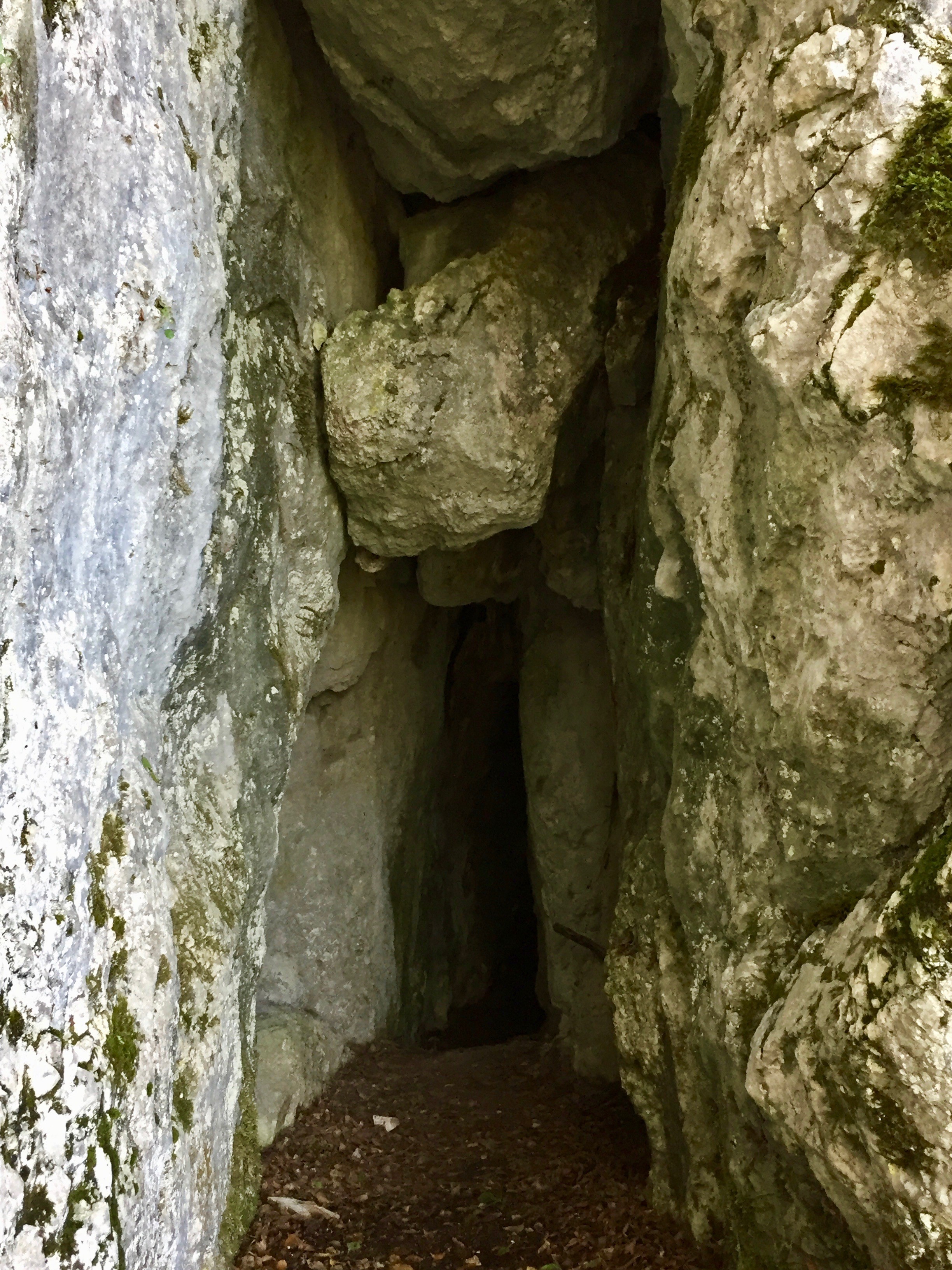(11)
Pilgrimage and Perseverance
A pilgrimage is training for not giving up despite adversities. Not giving up needs resilience and perseverance. The strength to endure hardships along the way comes from something I would call trust in life. This energy gives support on a very deep level, like the ocean supporting the waves. Ocean and waves are the same – one just has to be aware of it!
It was recommended that I take a bus for the first 6 km after Spoleto, so I did. The walk would have been through unattractive industrial zones. It was still a long walk to the hermitage Eremo La Romita, where I wanted to stay overnight. Many times I thought I lost the way – the path was hardly marked. When evening approached, I was walking in wild nature. Heavy rain in the past had washed deep canyons into the stony way. When it started to rain, I started looking for a possible place to stay overnight in case I lost my way. Then I saw a yellow Tau on a single wall – what a relief!
I arrived at the Romita in the evening and entered the gate without reading the warning signs written in Italian. As soon as I entered, two Maremma sheep dogs charged toward me, fiercely barking. Then they suddenly stopped and continued barking wildly.
Luckily, a woman was working in the garden and called the dogs back. Then she scolded me! I should have called before entering the gate! They could have attacked me! After that first encounter, the dogs became my friends and so did the woman, Katharina, who lived there permanently.
Immediately after I stepped through the gate, I knew – I love this place! A huge, over hundred-year-old Cedar tree spread its branches over the terracotta roofs, providing shade to the inner court. The garden was full of flowers, the air smelled of ripe figs and lavender, and there were birds everywhere.
Lebanese cedar
There was an atmosphere of beauty, peace, and serenity. Besides Fra Bernadino, three young people lived there, and Paola was there on a visit. Fra Bernadino, I was told by Katharina, would come in two days. I decided to stay for three nights.
About eight hundred years ago, St. Francis founded the Romita as a Franciscan monastery. In the 19th century, the monks had to leave and the buildings deteriorated nearly to piles of stones.
Entrance to kitchen and dining room
Morning glory in front of the kitchen entrance
The former cloister with a string of beans for drying
Fra Bernadino, a Franciscan monk (he received his PhD in theology studying with Dr. Hans Küng, who later became the president of the Foundation for a Global Ethic), had a vision of renovating the chapel, and he started the renovation with his own hands in 1991.
Fra Bernadino with Katharina from Germany
The chapel photographed from the garden
He faced fierce resistance from his order, but he persevered. With the help of many friends, he made the whole complex into a hidden treasure. People from all over the world come to Romita to be with him, work with him, talk with him.
He expresses the spirit of St. Francis – a rebel, an independent thinker, unpredictable and unique, and a lover of nature, beauty, joy, and truth. This was a threat to the Franciscan order! They wanted him to come back to the “safety” of the institution and leave the Romita. He refused. After 57 years of having been a Franciscan monk, at the age of 74, he was thrown out of the order. Now he is 82 years old and radiates joy and love from every pore of his body. He says that he has chosen love and liberation over fear.
It was at the Romita where St. Francis started to compose his famous song, “Canticle of the sun.”
Work in the garden
The days at the Romita were structured and free at the same time. The morning started with a morning service and then breakfast in silence. After that, everybody worked – in the kitchen, garden, or somewhere in the house. The afternoon was free.
A welcome poster for Fra Bernadino in the kitchen and dining room
Hanna making bread
Even the pumpkins smile
In the morning, Fra Bernardino wakes the pilgrims up with the soft sound of a kalimba and a song. Then he rings the bells of the little chapel. The first to come are his three dogs Romi, Dina, and Lea. They lay down around the altar. He starts the morning service with self-composed music for a poem by St. Francis and plays on a small, aged organ.
This was a place of joy, beauty, poetry, and harmony. Despite incredible difficulties, he was holding on to values he cherished. He said that, otherwise, he would have lost his soul.
Time to say goodbye to Hanna and Paola
View from Belvedere, near Romita (800 meter), to San Gemini
Cave where St. Francis meditated and prayed
Perseverance and resilience during quarantine are qualities of mind that are needed. New aspects in myself might arise; aspects I might not like. Perseverance helps me to accept it and not get swallowed up by it. Resilience helps me to not give up. Examples like St. Francis and Fra Bernadino show me how much a human being can endure and, with equanimity and gratitude, still keep the spirit of joyfulness.

